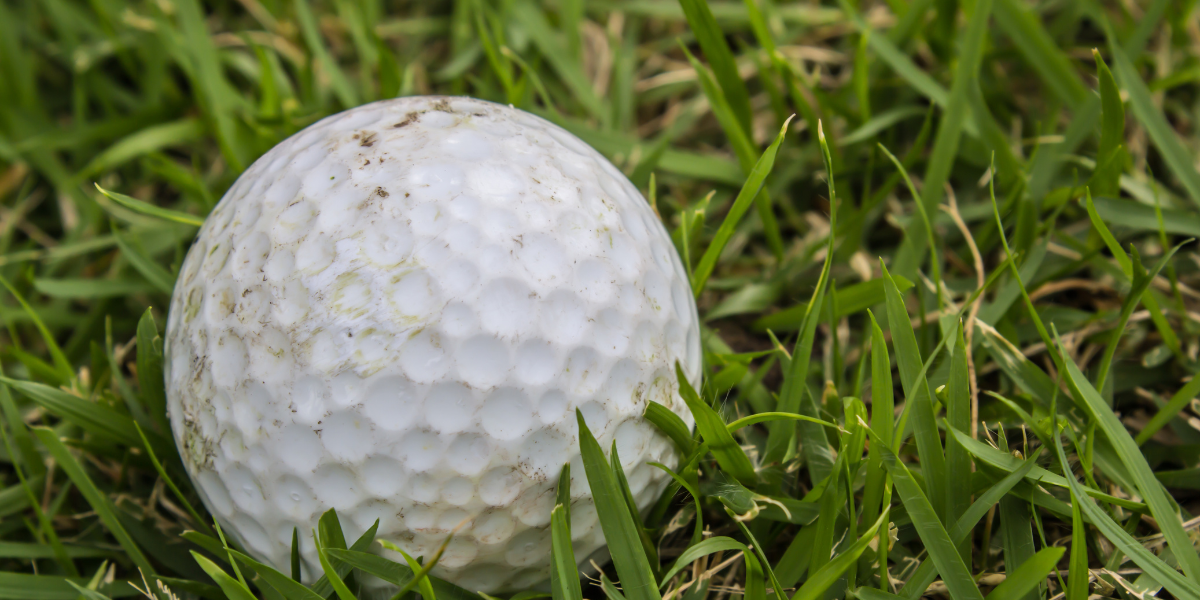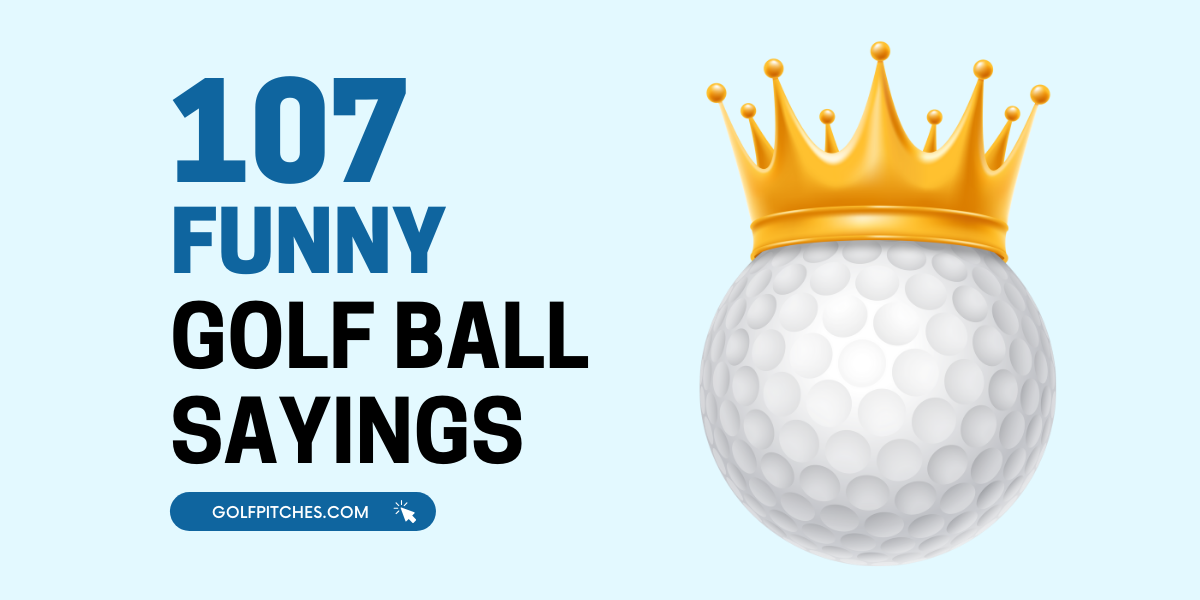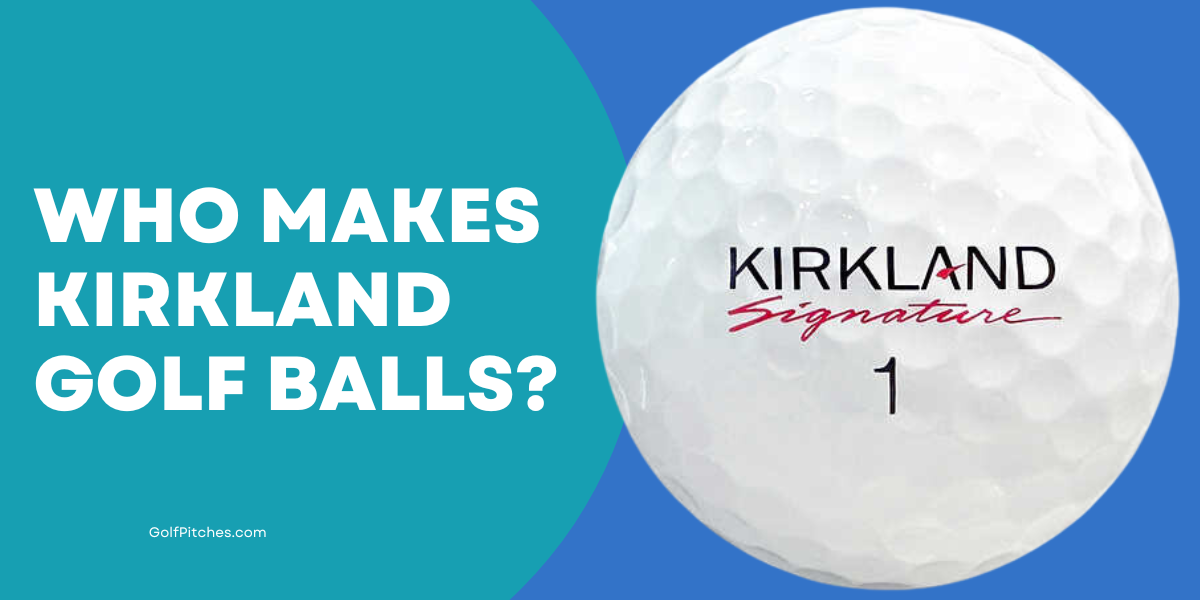Easiest Golf Ball Color to Find in Rough


If you’ve ever found yourself squinting into a sea of tall grass, hunting for your wayward golf ball, you know how crucial golf ball visibility is in this game.
Through my years on the green, I’ve encountered every challenge you can imagine, and one question keeps cropping up: What’s the easiest golf ball color to find in rough?
The color of your golf ball can be more than just a personal preference—it can be a game-changing strategy. That’s why we’re delving into the science and practical experience behind the visibility of different colored golf balls, specifically in rough terrains.
In this comprehensive guide, we’ll break down the factors affecting your ball’s visibility, dispel common myths, and share pro tips to help you make an informed decision.
Whether you’re an amateur golfer aiming to improve your game or a pro looking for that extra edge, understanding the easiest golf ball color to find in rough could be your key to a more efficient—and less stressful—round of golf. So let’s dive in.

TL;DR: Easiest Golf Ball Color to Find in the Rough
The easiest golf ball color to find in rough, according to both scientific studies and my extensive professional experience, is fluorescent yellow or neon orange. These vibrant colors are highly visible in a variety of light conditions and terrains.
Popular balls like the Titleist Pro V1 in high-visibility yellow or the Callaway Chrome Soft in neon orange are excellent choices for better visibility.
However, personal factors like your vision and the specific conditions you often play in can also influence how easily you can spot your golf ball. Read on for a deep dive into the science of golf ball colors, pro tips for easier ball retrieval, and expert recommendations to keep your game at its best.
![]() Pro Tip: Multiple Balls for Multiple Terrains
Pro Tip: Multiple Balls for Multiple Terrains
Many pros carry multiple types of balls with various colors and finishes to switch out depending on the specific challenges of the course on any given day. This strategy allows for maximum visibility and minimizes the time spent searching for lost balls.
Common Golf Ball Colors and Their Advantages in Rough
When it comes to the easiest golf ball color to find in rough, not all hues are created equal. Various colors offer different visibility advantages, which can be especially useful in the challenging terrain of the rough. Below, we’ll explore some common golf ball colors, their visibility pros and cons, and specific examples of popular balls in those colors.
White Golf Balls
- Advantages: The traditional white golf ball is classic for a reason. On green fairways and against blue skies, its visibility is often excellent.
- Disadvantages: In rough terrain, especially on overcast days, a white golf ball can easily blend in with the surrounding vegetation.
- Examples: Titleist Pro V1, Callaway Warbird
- Verdict: Not the easiest golf ball color to find in rough, but decent in many situations.
Read: Why Are Golf Balls White?
Yellow Golf Balls
- Advantages: Fluorescent yellow balls are generally easier to spot in rough terrain. The color contrasts well against both green grass and brown earth.
- Disadvantages: Some people find yellow balls distracting, which could potentially impact performance.
- Examples: Titleist Pro V1 High Optic Yellow, Srixon Soft Feel Yellow
- Verdict: Often cited as the easiest golf ball color to find in rough, especially in varying light conditions.
Read: Best Yellow Golf Balls
Orange Golf Balls
- Advantages: Like fluorescent yellow, neon orange is another color that often stands out well in rough. It’s particularly visible in lower light conditions.
- Disadvantages: Some players feel that orange balls are easier to lose sight of in flight.
- Examples: Callaway Chrome Soft Truvis Orange, TaylorMade Project (s) Orange
- Verdict: A close second to yellow for the title of easiest golf ball color to find in rough.
Pink Golf Balls
- Advantages: Pink golf balls provide a strong contrast against green grass and are fairly easy to spot.
- Disadvantages: Visibility can decrease in low-light or overcast conditions.
- Examples: Callaway Supersoft Pink, Volvik Vivid Pink
- Verdict: Good visibility but not universally considered the easiest golf ball color to find in rough.
Green Golf Balls
- Advantages: Some players find that green balls are easier to track in the air against a blue sky.
- Disadvantages: A green golf ball can be nearly impossible to locate in rough terrain due to its color blending with the grass.
- Examples: Volvik Vivid Green, Wilson Duo Soft Optix Green
- Verdict: Generally not recommended for easier spotting in rough.
Multicolor Golf Balls
- Advantages: Multicolored balls like the Callaway Truvis with its soccer ball-like pattern offer multiple colors for improved visibility.
- Disadvantages: The benefits of multiple colors can be negated if one of the colors blends into the rough.
- Examples: Callaway Chrome Soft Truvis, TaylorMade Project (a) PIX
- Verdict: Visibility varies; may not be the easiest golf ball color to find in rough but could offer a good compromise.
Factors Affecting Golf Ball Visibility in Rough

Grass Color and Texture
When it comes to finding your golf ball in the rough, the color and texture of the grass play pivotal roles that shouldn’t be underestimated.
The type of grass, its current state of health, and even seasonal changes can create a background against which some golf ball colors shine brightly—while others practically disappear. Let’s explore this complex interplay in detail.
Types of Grass
Golf courses usually feature different kinds of grass such as Kentucky Bluegrass, Bermuda, or Fescue.
Each of these has unique shades of green that can either help or hinder your visibility.
For example, Bermuda grass tends to be a brighter, almost yellow-green shade that may make white balls like the standard Titleist Pro V1 more visible.
On the other hand, the dark, rich greens of Fescue can make neon orange balls like the Callaway Chrome Soft in neon orange easier to spot.
Grass Texture
Texture plays a massive role in golf balls’ visibility as well. Finer grasses can let a ball sink deeper into the rough, making it harder to spot regardless of its color.
Conversely, coarser, taller types of grass can sometimes ‘cradle’ the ball, making it easier to spot from a distance.
For instance, a matte finish ball like the TaylorMade TP5 Pix can be easier to spot when it’s cradled in coarse grass, thanks to its high-contrast graphics.
Seasonal and Health Factors
During summer, grass may turn a dry, lighter shade, which could potentially make darker or brightly colored balls easier to spot.
In contrast, the vibrant greens of spring could make fluorescent balls stand out more.
If the grass is unhealthy and brown, even white balls can become challenging to find. In such a scenario, a neon-colored Bridgestone e12 Contact could be your best bet for maximum visibility.
Light and Shadow
The interaction of sunlight and shadow on grass texture can also be a factor. Brightly lit, smooth-textured grass can create glare, making it hard to spot glossy balls. In this case, balls with a matte finish, like the Volvik Vivid, can be easier to spot.
Conversely, in shadowy areas, glossy balls might catch and reflect any available light, making them easier to find.
The Interplay of Color and Texture
It’s the unique combination of grass color and texture that can make all the difference.
For instance, if you’re playing on a course with finely textured, dark green grass, a bright yellow Srixon Soft Feel may provide the best visibility. But if you’re dealing with coarse, light-green grass, a contrasting orange or even a red ball like the Wilson Staff Duo Optix can be easier to spot.
How Weather Conditions Affect Golf Ball Visibility in Rough
One of the often-overlooked factors when choosing the easiest golf ball color to find in rough is weather conditions. Different lighting scenarios and environmental elements can drastically change the visibility of your chosen golf ball.

Sunny Days
Bright, sunny conditions can create strong shadows and reflections on the golf course, sometimes making it challenging to find even the most vibrant-colored golf balls.
However, it’s worth noting that in direct sunlight, fluorescent or neon-colored balls like the Volvik Vivid in matte orange or the Callaway Chrome Soft in neon yellow tend to pop out more than traditional white balls like the Titleist Pro V1.
Neon colors refract light differently, making them more visible in bright conditions.
Overcast or Cloudy Skies
Under overcast skies, colors can look muted, and the lack of shadows can often make the golf ball appear flat against the rough.
In such conditions, high-visibility yellow balls like the Srixon Z-Star XV or Bridgestone Tour B RX in optic yellow can be much easier to locate. The muted lighting helps the ball stand out against the similarly muted colors of the surrounding terrain.
Foggy or Misty Conditions
Fog and mist scatter light, reducing contrast and visibility. In these conditions, you might think that a white ball would stand out, but surprisingly, it can often blend into the fog.
In foggy or misty conditions, a brightly colored ball such as the Wilson Staff Duo Soft in matte orange could be your easiest golf ball color to find in the rough.
Fall and Winter Seasons
During the fall, the changing foliage and brownish rough can make traditional white balls harder to spot. Consider using a pink golf ball like the Pinnacle Soft in pink during these times for better visibility against the autumnal palette.
Also Read: Best Golf Ball Color for Fall
Winter brings its own challenges with snow and grey skies. In snowy conditions, a dark-colored ball like the TaylorMade TP5 Pix in black and yellow can be more visible.
Spring and Summer
In the lush green of spring and summer, a traditional white ball can often blend into the background, especially when it ends up in the rough. Opt for the contrasting Titleist AVX in yellow for better visibility in these conditions.
Dusk and Dawn
Playing in the low light of early morning or late evening? The lack of direct sunlight could make it challenging to spot any ball, but high-contrast balls like the TaylorMade Project (a) in neon yellow can give you an edge.
Pro Tips for Easier Ball Retrieval in Rough
While finding the easiest golf ball color to find in rough is crucial, there are several other pro tips that can save you time and frustration when you’re in challenging terrains. Here’s how you can leverage both color and technology for easier ball retrieval:
.st0{fill:#008A90;} .st1{opacity:0.7;} .st2{fill:#00BCB7;} .st3{fill:#006B6B;} .st4{fill:#C0D5C9;} .st5{fill:#E4F2E9;} .st6{fill:#889E91;} .st7{fill:#D56F00;} .st8{fill:#F8C477;} .st9{fill:#823500;} .st10{fill:#184C4C;} .st11{fill:#042B2B;} .st12{fill:#247F84;} .st13{fill:#11A2FE;} .st14{fill:#77D5FF;} .st15{fill:#0066D2;}
Use a Rangefinder with Tracking Capabilities
Investing in a good rangefinder like the Bushnell Tour V5 Shift can provide you with a precise distance to the flag, and some even have tracking capabilities that can help you locate your ball if you have an idea of where it might have landed.
.st0{fill:#FFCDAB;} .st1{opacity:0.7;} .st2{fill:#FFEDDC;} .st3{fill:#D56F00;} .st4{fill:#823500;} .st5{fill:#EAA07F;} .st6{fill:#FCFBE7;} .st7{fill:#DDD685;} .st8{fill:#FFFFFF;}
High-Contrast Markings
Consider using a black marker to put a unique golf ball mark on your ball, regardless of its color. The contrast will make it easier to spot in rough terrains. For example, a black dot or stripe on a Titleist Pro V1 yellow ball can make it one of the easiest golf ball colors to find in rough.
.st0{fill:#D00204;} .st1{opacity:0.7;} .st2{fill:#96050C;} .st3{fill:#FF121E;} .st4{fill:#008F24;} .st5{fill:#005913;} .st6{fill:#07E561;} .st7{fill:#FCFBE7;} .st8{fill:#FFFFFF;} .st9{fill:#DDD685;} .st10{fill:#FFCDAB;} .st11{fill:#FFEDDC;} .st12{fill:#EAA07F;}
Adapt Your Swing to Avoid Rough
Sometimes the best way to find your ball is to not lose it in the first place. If you know a hole has particularly challenging rough, consider using an iron off the tee for better control.
.st0{fill:#008F24;} .st1{opacity:0.7;} .st2{fill:#07E561;} .st3{fill:#005913;} .st4{fill:#FFCDAB;} .st5{fill:#EAA07F;} .st6{fill:#375E7D;} .st7{fill:#11A2FE;} .st8{fill:#77D5FF;} .st9{fill:#0066D2;} .st10{fill:#D00204;} .st11{fill:#FF121E;} .st12{fill:#96050C;}
Scout the Area Before Hitting
Before taking your swing, analyze the layout of the rough areas and the direction of the wind. If the rough has patches of lighter or darker grass, aim for an area where your chosen ball color will stand out more. For example, if you are using a neon orange Callaway Chrome Soft, aim for darker patches of rough where the ball will be easier to locate.
.cls-1{fill:#a0c578;}.cls-2{fill:#e2d7d7;}.cls-3{fill:#231f20;}
Ball Spin and Flight Trajectory
The manner in which a ball spins and its flight trajectory can also affect where it lands. Balls like TaylorMade TP5x promote a higher launch and lower spin rates, which might help you avoid the deeper parts of the rough.
.cls-1{fill:#a0c578;}.cls-2{fill:#e2d7d7;}.cls-3{fill:#231f20;}
Make Note of Landmarks
If possible, always try to make a mental or physical note of a landmark (like a tree or bush) near where you think your ball will land. This will give you a point of reference when searching later.
Frequently Asked Questions About Easiest Golf Ball Color to Find in Rough
1. Is there really a significant difference in visibility among golf ball colors?
Yes, there is a noticeable difference in how easily various golf ball colors can be spotted in different terrains, especially in rough areas. Bright, fluorescent colors like yellow and orange are generally easier to spot than traditional white or green balls.
2. What does science say about the easiest golf ball color to find in rough?
Studies suggest that bright, neon colors are more easily discernible to the human eye in a variety of light conditions. This makes fluorescent yellow and orange good choices for visibility in rough terrains.
3. Are there specific brands that offer the best visibility in rough terrains?
Popular brands like Titleist and Callaway offer high-visibility versions of their top models, such as the Titleist Pro V1 High Optic Yellow and the Callaway Chrome Soft in neon orange. These are excellent options for better visibility in rough conditions.
4. Does weather affect golf ball visibility?
Absolutely. Overcast conditions can make it harder to find a white golf ball, while bright sunlight might cause glare on lighter colors. Fluorescent colors tend to maintain their visibility better in varying weather conditions.
5. Is it only the color that matters for visibility?
While color is a significant factor, other elements like golf ball markings, light conditions, and even individual vision can influence visibility. Some golfers use rangefinders with tracking capabilities to help locate balls more easily.
6. How do pros feel about using colored golf balls?
Many professional golfers stick with traditional white balls, but some have begun using colored balls for their visibility advantages. The choice often comes down to personal preference and specific playing conditions.

Patrick Mahinge is a golf enthusiast and the chief editor of Golf Pitches, a website that delivers innovative and data-driven golf product reviews. With a keen eye for detail and a passion for the sport, Patrick has transformed Golf Pitches into a trusted source of information for golfers worldwide. Patrick's expertise lies in his ability to dissect complex golf equipment and present his findings in an engaging, easy-to-understand manner. His reviews are not just informative, but they are also backed by rigorous data-driven methodologies, making them a trusted resource for golf enthusiasts and professionals alike..


